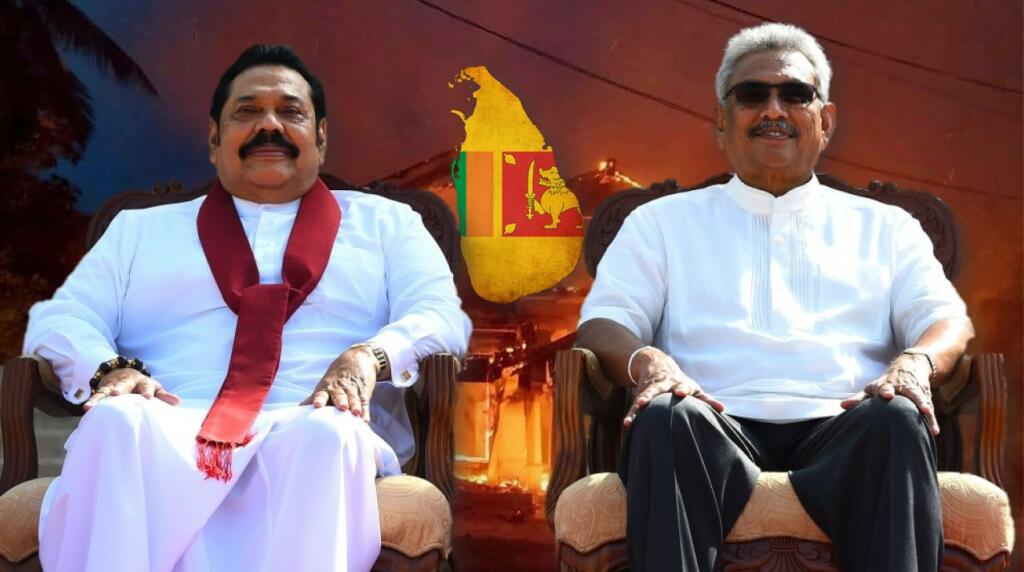It is said that one of the biggest roadblocks in a country’s development story is the greed for power and the dream to hold office by a few. In India, Congress ruled for the major part after independence and it was certain leaders having the Gandhi surname that enjoyed the benefits of dynasty politics. While the dynasty grew fatter and richer, the country regressed, on namely every front.
While the Gandhis held top positions within the party and the cabinet, thankfully it never got to an overarching point where the basic structure of the union of India was threatened, well barring the dark Emergency period of 1975. However, our southern neighbour of Sri Lanka did not have the same good fortune. Currently facing an existential crisis that threatens the immediate future of 21 million-odd Sri Lankans — the island nation has had to endure a long spell of dynasty politics which in hindsight has been the root cause of their problems. And the family at the heart of it is the Rajapaksa and the Gotabaya family.
It is reported that at the height of their power, four brothers from Sri Lanka’s Rajapaksa Dynasty held the presidency and the prime minister’s office as well as the finance, interior and defence portfolios, among others in the country.
President Gotabaya Rajapaksa and his brothers Chamal, PM Mahinda, and Basil are third-generation politicians, while the fourth generation is represented by Mahinda and Chamal’s sons Namal, Yositha and Shashindra. During Mahinda Rajapaksa’s second term as President from 2010-15, there were said to be more than 40 Rajapaksa family members in government posts, apart from the cabinet.
The Genesis
However, the Rajapaksa’s leading the political class in Sri Lanka is not a recent phenomenon. After independence, Don Alwin Rajapaksa was one of the two Rajapaksas who was the founding member of the Sri Lanka Freedom Party (SFLP).
After the assassination of SFLPs top leader SWRD Bandaranaike in 1959, his wife Sirimavo took charge. Meanwhile, Don Alwin Rajapaksa camouflaged in the background and started to rise through the ranks.
By the time Chandrika Kumaratunga came to power in 1994, Don Alwin Rajapaksa had installed his son Mahinda Rajapaksa in the power corridors of Ceylon for more than two decades already. Meanwhile, elder brother Chamal and cousin Nirupama were also hovering around the party and cabinet.
In 2005, Mahinda had the opportunity after Kumaratunga stepped down and he gobbled it up with both hands. The military operations to rid the island of LTTE added to Mahinda’s standing and he and his family became the unmovable force in Sri Lanka.
And thus started the descent into madness- aided by limitless power and no one to check up on it. Rajapaksa embarked on the militarisation of the Sinhalese-Buddhist majority. Corruption became rampant, the media became a puppet and the Rajapaksa family was at it – at the heart of everything.
Indian liberals like Kaushik Basu praised Sri Lanka for the ease of doing business where it was ranked higher than India. However, little did the kindergarten economist understand that Sri Lanka’s ease of doing business was a mirage as all a businessman needed was good relations with the Rajapaksa family and of course, some extra money. It was a one-stop window clearance headed by ‘Rajapaksa and Enterprise’.
Ease of doing business; how Sri Lanka beats India by a margin of more than three to one: https://t.co/69G142QJ23
— Ramachandra Guha (@Ram_Guha) April 11, 2018
Rajapaksa’s making bed with China and derailing relations with India
For years, this enterprise continued to hollow out Sri Lanka from within. It didn’t help the cause that from 2010 to 2016 Mahinda Rajapaksa became an active Chinese stooge. The selling of Hambantota port and Sri Lanka becoming the latest target of Beijing’s debt-trap policy, all transpired during this period and only because the Rajapaksa family was blinded by the honeydew words of CCP and Xi Jinping.
It even derailed the historic relations with India when in 2014, a Chinese submarine stopped over at Colombo port, setting alarm bells ringing in New Delhi.
Read More: How China created an economic crisis in Sri Lanka using Rajapaksa and how India neutralized it
When Mahinda was defeated in the 2015 presidential elections, he would blame it on India’s R&AW. His bid to become PM failed when the fractured SLFP lost the parliamentary election.
The comeback
After a relative period of dormancy, the Rajapaksas once again came to power in 2020, following a landslide victory where President Gotabaya Rajapaksa won the presidential elections handsomely and chiselled out a cabinet that included two of his brothers and two nephews, sharing multiple portfolios among the family.
Mahinda Rajapaksa became Sri Lanka’s new prime minister and was also named head of three ministries: finance, urban development and Buddhist affairs. The president then swore in his eldest brother, Chamal Rajapaksa, as minister for irrigation, internal security, home affairs and disaster management. Chamal’s son Sashindra was made junior minister for high-tech agriculture. The prime minister’s son Namal became minister of youth and sports.
Gandhi family vs the Rajapaksa family
The parallels are eerily similar in the case of India. Here, the Gandhi dynasty nearly ran the country to the ground. And if it wasn’t for the BJP or Prime Minister Narendra Modi — The Gandhis would have continued to be a sell-out — pawning the country in front of the Chinese and the Western politicians.
And yet Congress — India’s supposedly principal opposition party is unwilling to reinvent the wheel. With their voodoo magic cast over the zombie members of Congress, the Gandhi family has managed to usurp power to an extent that any talk of reform within the party is shot down promptly. As for liberals trying to justify the Gandhis this short read might help them understand the perils of dynasty politics.
